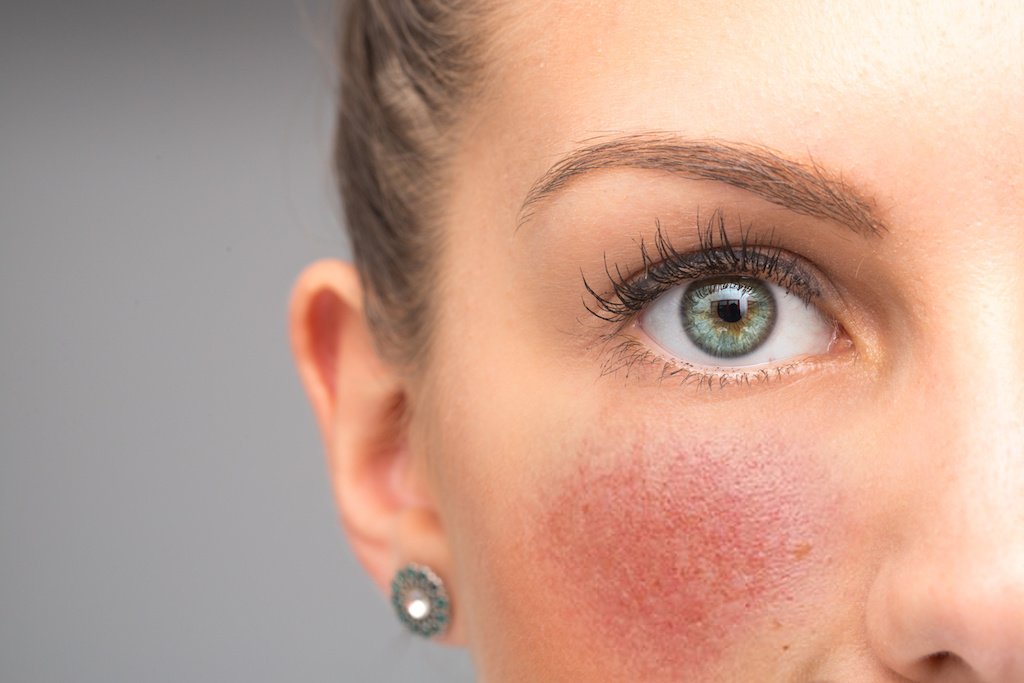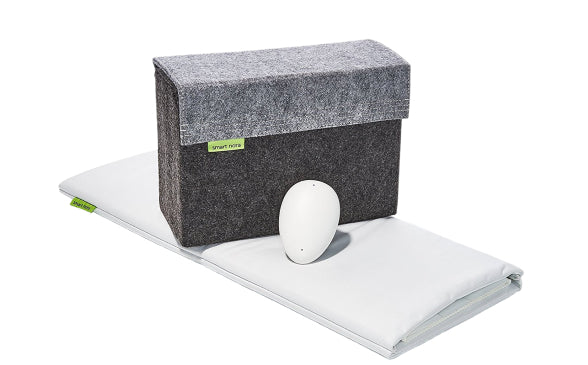
Categories
Rhinophyma: Causes & Treatments

If you’ve ever seen the classic sort of Renaissance painting of a man with a bulbous, thick red nose—you know, the sort of kindly old fella with reddish cheeks and an older man’s disposition—you probably recognize the condition known as rhinophyma. Many people incorrectly confuse rhinophyma as having to do with alcoholism, but in reality, it is a skin disorder stemming from another skin condition called Rosacea. Learn more about the causes, treatments, and how to live with this uncommon disorder.
Rhinophyma Begins With Rosacea
Rosacea is a skin condition that causes redness, swelling, pimples, and superficial dilated blood vessels, typically in the face—and focused on the nose, cheeks, forehead, and chin. What’s strange is that the cause of rosacea itself is still unknown, though the main risk factor seems to be a family history. Essentially, it’s a condition wherein your skin is hypersensitive and easily irritated—and can be triggered by outside factors as simple as sun exposure, stress, and caffeine. While most cases are never diagnosed and there is no long-term physical danger to being affected with rosacea, most of the time treatment is done simply with cosmetics and careful attention to skin-care routine. Because there is no cure for rosacea, treatment is measured in terms of reduction… but why does rosacea matter so much here?
This dermatological condition is the only precursor to rhinophyma. While the exact cause of why advanced cases of rosacea sometimes morph into rhinophyma is unknown, there is a significant correlation between the two and information for understanding its prevalence.
According to a 2015 study by Laun, Gopman, Elson, and Harrington, “while rosacea is a common condition found in women, rhinophyma has a male-to-female predominance ranging from 12 to 30:1 and typically occurs in the age range from 50 to 70 years. Fortunately, only a minority of patients with rosacea progress to develop rhinophyma. In one study of 108 patients with rosacea, only 15 were noted to have rhinophyma, almost all of whom were men.”
For men, rhinophyma is unlikely. For women, even less so. The disease mainly affects caucasian men over 50 years old.
What Does Rhinophyma Look Like?
Because of a long-running misconstrued association between alcohol consumption and rhinophyma, the condition carries somewhat of a stigma, being referred to at times as “alcoholic nose,” “drinker’s nose,” or the oddly specific “rum nose.” In reality, this skin disorder is simply a worsening of untreated, advanced stage IV rosacea, wherein a benign skin deformity becomes a benign tumorous growth.
Characteristics include:
- Bright red to purplish nose
- Popped blood vessels
- Irregularity in nose shape
- Thickened, or “lobulated,” nose skin
- Large, prominently visible pores
Treatment of Rhinophyma
There are several treatments available, though none are permanent cures, as rhinophyma and rosacea can both resurface. There are two main steps for treatment:
1. Medication
The first option for treatment is usually a medication meant to treat the underlying rosacea issue. While oral and topical antibiotics may often reduce redness or inflammation, this medication is most beneficial if rhinophyma is in the early stages. Severe benign tumors are unaffected by antibiotics.
The three most common antibiotics prescribed for treating rosacea are tetracycline, metronidazole, erythromycin. Sometimes, it is necessary to use additional moisturizers or medications to aid in the increased skin oiliness or dryness associated with antibiotic use.
2. Surgery
In more severe cases, for the long-term treatment of rhinophyma, surgery is the best (and maybe only) option. Catching the disease in its early stages is necessary for effectively combating the physical effects of the disease. Stage II rhinophyma, as recognized in a 2012 study by Popa et al., “appears around the age of 30 and it is clinically characterized by permanent facial redness associated with telangiectasia located on the nose, cheeks, and forehead.” Catching rhinophyma early is the key to successful treatment.
Surgical options range from:
- Dermabrasion, or the removal of excess layers of skin through an exfoliating process
- Cryosurgery, which is used for freezing and destroying unwanted excess tissues
- Sharp excision, wherein a doctor cuts away at growth or excess tissue (with a scalpel or similar cutting tool)
- Carbon dioxide laser resurfacing, which is similar to sharp excision but may heal faster and cause less scarring due to the precision of laser cutting
Because all surgical options come with potential risks, it is up to doctors to discuss the best options and help decide on the right procedure. In most cases, a combination of techniques helps get rhinophyma under control.
Living With Rhinophyma
Because this skin disorder is characterized by being benign, there is no danger of dying from it. However, without proper treatment, severe rhinophyma can lead to deformity, causing embarrassment, stress, or social ostracism. Ostracism, or being ignored or actively excluded from a social group, is extremely psychologically damaging. The negative feelings of being ostracized are likely a biological response.
In Kipling Williams’ 2000 groundbreaking study of ostracism and its negative effects, researchers designed a game where three dots on a computer screen toss a ball to one another. One dot represents the participant and the other two are secretly AI. The AI gradually stop throwing the ball to the participant and the participants reported feeling increasingly worse, less in control, and lost a sense of belonging as the game went on.
The long-lasting effects of being excluded are well-researched, and the social difficulty of living with severe rhinophyma can be quelled by developing a strong support network of friends and colleagues. Cognitive-behavioral therapy can help one improve how one sees themselves by developing a strong sense of self and working toward removing the need for external validation, as well as an understanding of body dysmorphic disorder (severe cases). If you don’t have rhinophyma but know somebody who does, it should go without saying that you treat them well!
Conclusion
Rhinophyma is a somewhat rare skin disorder stemming from the skin condition Rosacea. While incurable, rhinophyma can be alleviated (to a degree) through a variety of treatments and is easy to spot early on, as symptoms can appear as early as age 20. Rhinophyma is benign, and though it may be visibly unappealing to some, there’s nothing inherent about it that suggests a person should receive any adverse social treatment because of their condition.

